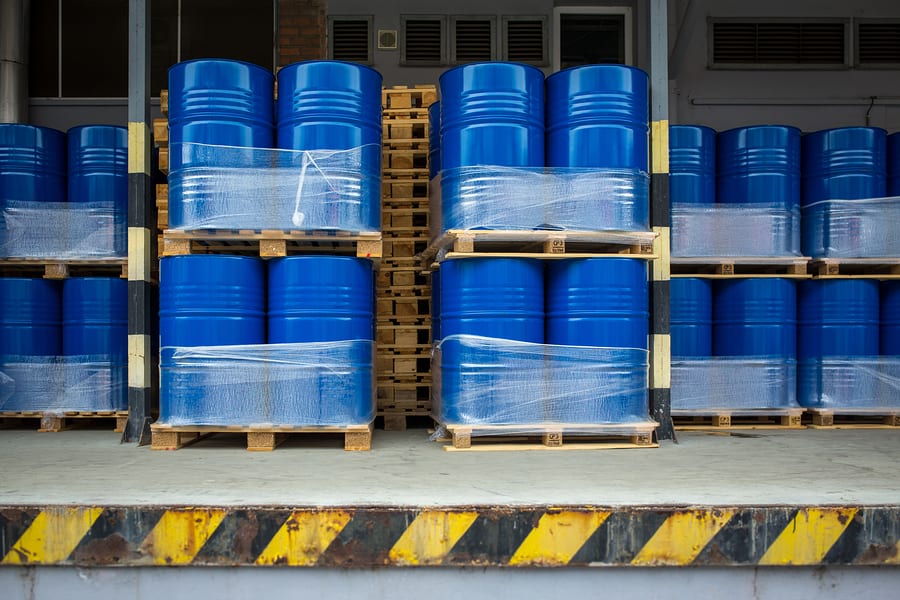March 1 is the annual deadline for your Tier II reporting, and it’s going to be here before you know it. So if you haven’t put it on your to-do list yet, now’s the time — you don’t want to miss this deadline. The EPA can hit you with some hefty fines if you fail to comply.
Tier II reporting
Tier II reporting is a requirement under Section 312 of the Emergency Planning Community Right-to-Know Act (EPCRA) of 1986. The EPCRA Hazardous Chemical Inventory Reporting requirements cover all facilities that are required to maintain Safety Data Sheets (SDSs) for hazardous chemicals stored in the workplace.
If you meet the reporting thresholds, you must submit Tier II reports — or emergency and hazardous chemical inventory reports — to your:
- State Emergency Response Commission (SERC)
- Local Emergency Planning Committee (LEPC)
- Local fire department(s)
These comprehensive reports include information about hazardous chemicals including CAS numbers, how the substances are stored, and much more.
Tier II reporting thresholds
The EPA website states that facilities that have chemicals that meet or exceed these thresholds must complete a Tier II report.
- Extremely Hazardous Substances (EHSs): either 500 pounds or the Threshold Planning Quantity (TPQ), whichever is lower.
- Gasoline (all grades combined) at a retail gas station: 75,000 gallons (~283,900 liters), if the tank(s) was stored entirely underground and was in compliance at all times during the preceding calendar year with all applicable Underground Storage Tank (UST) requirements or requirements of an agency-approved state UST program.
- For diesel fuel (all grades combined) at a retail gas station: 100,000 gallons (~378,500 liters), if the tank(s) was stored entirely underground and the tank(s) was in compliance at all times during the preceding calendar year with all applicable UST requirements or requirements of an agency-approved state UST program.
- For all other hazardous chemicals: 10,000 pounds.
States with approved UST programs
Common Tier II reporting mistakes
Determining what chemicals you need to report isn’t always easy.
Say, for example, you have electric forklifts on site. No big deal when it comes to Tier II reporting, right? Not so fast.
Batteries in electric forklifts contain sulfuric acid, an EHS. And if you have over 500 pounds of sulfuric acid on site, you need to account for that in your Tier II report. That sounds like a lot of chemicals, but put this in perspective — one electric forklift battery can weigh up to 3,000 pounds, with 330 pounds of that being sulfuric acid. So if you have two electric forklifts and batteries on site, you need to complete a Tier II report.
If you’re not sure which chemicals you need to report, refer to the EPA’s List of Lists.
State reporting requirements
States have different reporting requirements. For example, in Michigan, you can only submit Tier II reports through their Tier II Manager™ software. Meanwhile, some states, for example, Ohio, request that facilities use the EPA’s Tier2 Submit™. South Dakota and Minnesota still accept hard copies. You must check your state’s unique requirements so you can ensure compliance.
Check your state’s requirements:
- Alabama
- Alaska
- American Samoa
- Arizona
- Arkansas
- California
- Colorado
- Connecticut
- Delaware
- District Of Columbia
- Florida
- Georgia
- Guam
- Hawaii
- Idaho
- Illinois
- Indiana
- Iowa
- Kansas
- Kentucky
- Louisiana
- Maine
- Maryland
- Massachusetts
- Michigan
- Minnesota
- Mississippi
- Missouri
- Montana
- Nebraska
- Nevada
- New Hampshire
- New Jersey
- New Mexico
- New York
- North Carolina
- North Dakota
- Ohio
- Oklahoma
- Oregon
- Pennsylvania
- Puerto Rico
- Rhode Island
- South Carolina
- South Dakota
- Tennessee
- Texas
- Utah
- Vermont
- Virgin Islands (U.S.)
- Virginia
- Washington
- West Virginia
- Wisconsin
- Wyoming
—
Tier II reporting can be a daunting task, especially if you’ve never done it before. TriMedia’s environmental professionals can help you with:
- Completing SDS reviews or audits
- Sorting through state Tier II reporting requirements
- Contacting your local emergency planning committees (LEPC) and local fire departments
- Emergency preparedness planning
To set up a consultation, contact us today.


